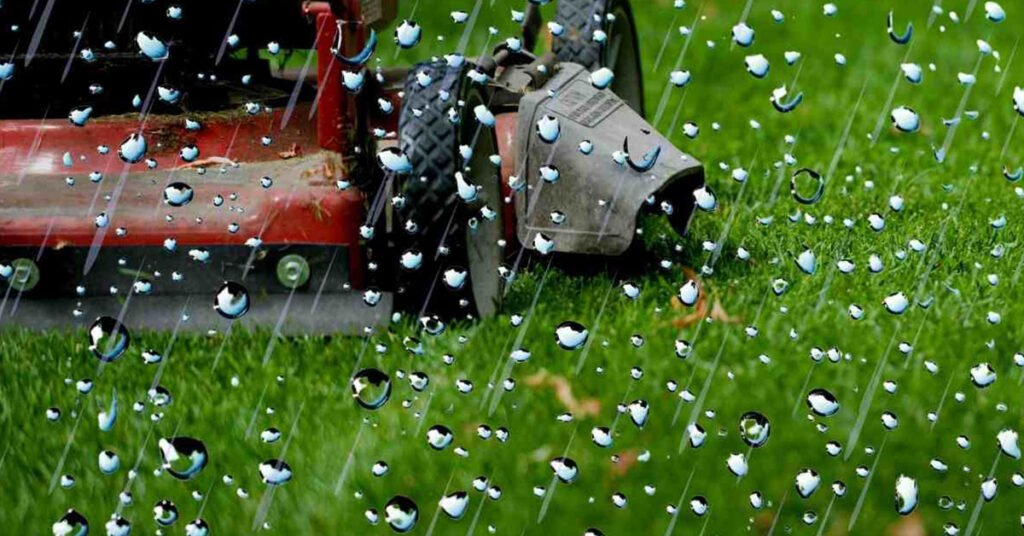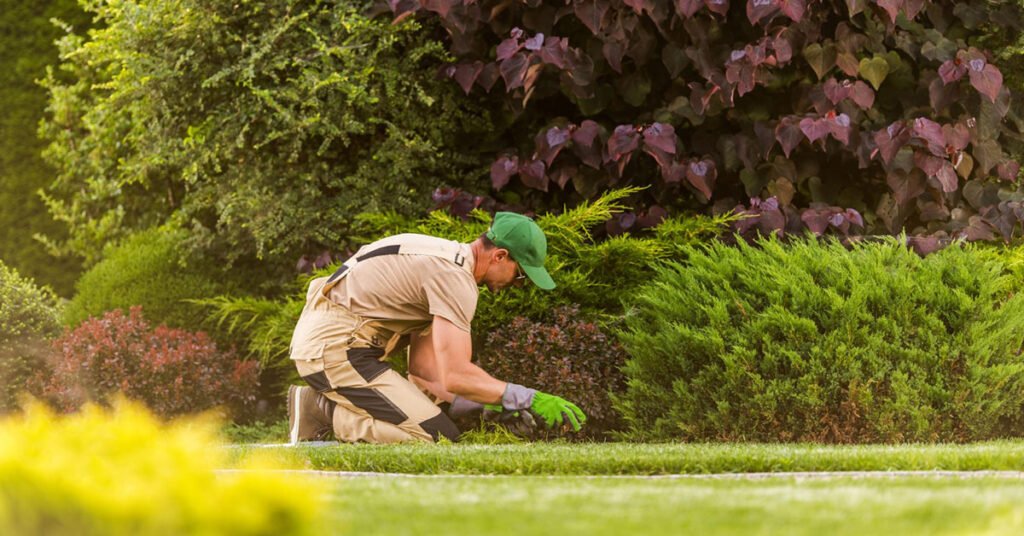Aspiring landscapers often face uncertainties about working conditions, especially when it comes to inclement weather. One common question that arises is: Do landscapers cut grass in the rain? In this guide, we’ll delve into the factors to consider and the best practices for landscaping professionals facing rainy weather.
Do Landscapers Cut Grass in the Rain?
The question of whether landscapers should cut grass in the rain is a common concern among those entering the landscaping industry. The straightforward answer is: it depends.
Cutting grass in the rain presents a unique set of challenges and considerations that landscapers must weigh carefully. While there are instances where it may be feasible and necessary to work in wet conditions, there are also potential drawbacks and risks to consider.
Pros of Cutting Grass in the Rain
- Optimal Moisture Levels: Rain can provide much-needed moisture to dry or stressed lawns, making it easier to cut the grass evenly.
- Flexible Scheduling: In some cases, clients may prefer to stick to their landscaping schedule despite rainy weather. By offering services rain or shine, landscapers can accommodate their clients’ needs and maintain customer satisfaction.
- Reduced Heat Stress: Working in cooler, rainy weather can be more comfortable for landscapers, especially during hot summer months.
Cons of Cutting Grass in the Rain
- Safety Concerns: Wet conditions can create slippery surfaces, increasing the risk of slips, falls, and injuries for landscapers. Additionally, lightning poses a significant danger when working outdoors during a storm.
- Equipment Damage: Rainwater can cause rust and corrosion to landscaping equipment, leading to premature wear and potential malfunctions. Wet grass clippings may also clog mowers and other machinery, requiring frequent cleaning and maintenance.
- Quality Compromises: Cutting grass in the rain can result in clumping, uneven mowing patterns, and soil compaction, negatively impacting the overall appearance and health of the lawn.
- Client Expectations: Some clients may prefer to reschedule landscaping services during rainy weather to avoid potential damage to their property or dissatisfaction with the results.
Best Practices for Rainy Days
- Monitor Weather Forecasts: Stay informed about upcoming weather patterns and plan your landscaping activities accordingly. Adjust schedules to avoid working during heavy rainfall.
- Use Proper Equipment: Invest in quality rain gear and waterproof clothing to stay comfortable and safe while working outdoors. Ensure that equipment is well-maintained and functioning optimally.
- Assess Site Conditions: Before starting work, assess the terrain for any potential hazards, such as slippery slopes or standing water. Take appropriate precautions to mitigate risks.
- Adjust Cutting Techniques: When cutting grass in the rain, adjust your cutting height and technique to achieve satisfactory results. Avoid mowing overly wet or saturated areas to prevent damage to the turf.
- Communicate with Clients: Keep open lines of communication with clients regarding scheduling changes due to inclement weather. Provide updates and alternative solutions to meet their landscaping needs.
Factors to Consider
Safety First: Safety should always be the top priority for landscapers. Assess the risks associated with working in wet conditions, including slippery surfaces and reduced visibility.
Equipment Maintenance: Rain can accelerate wear and tear on landscaping equipment. Regular maintenance and proper storage are essential for preserving the lifespan of tools.
Grass Health: Cutting wet grass may not yield the desired results and can potentially harm the turf. Evaluate the grass’s condition and consider postponing cutting if it’s excessively wet.
Client Expectations: Communicate with clients about the impact of rainy weather on landscaping schedules. Transparency and flexibility are key to maintaining client satisfaction.
Read More: Where To Place Landscape Lighting?
Conclusion
While cutting grass in the rain presents challenges, with proper preparation and adherence to best practices, landscapers can effectively navigate inclement weather conditions. By prioritizing safety, equipment maintenance, and client communication, aspiring professionals can establish themselves as reliable and knowledgeable experts in the landscaping industry.



